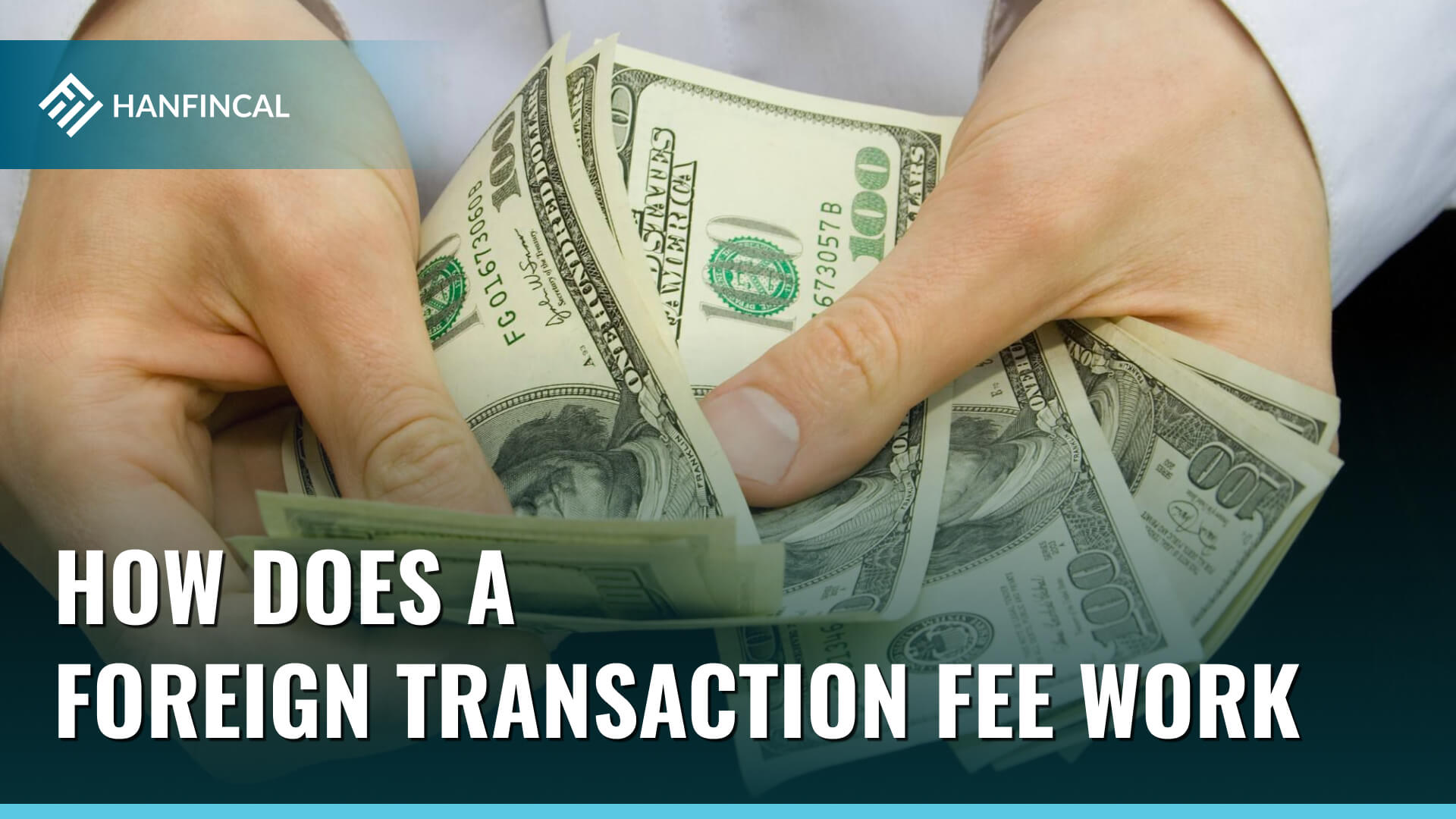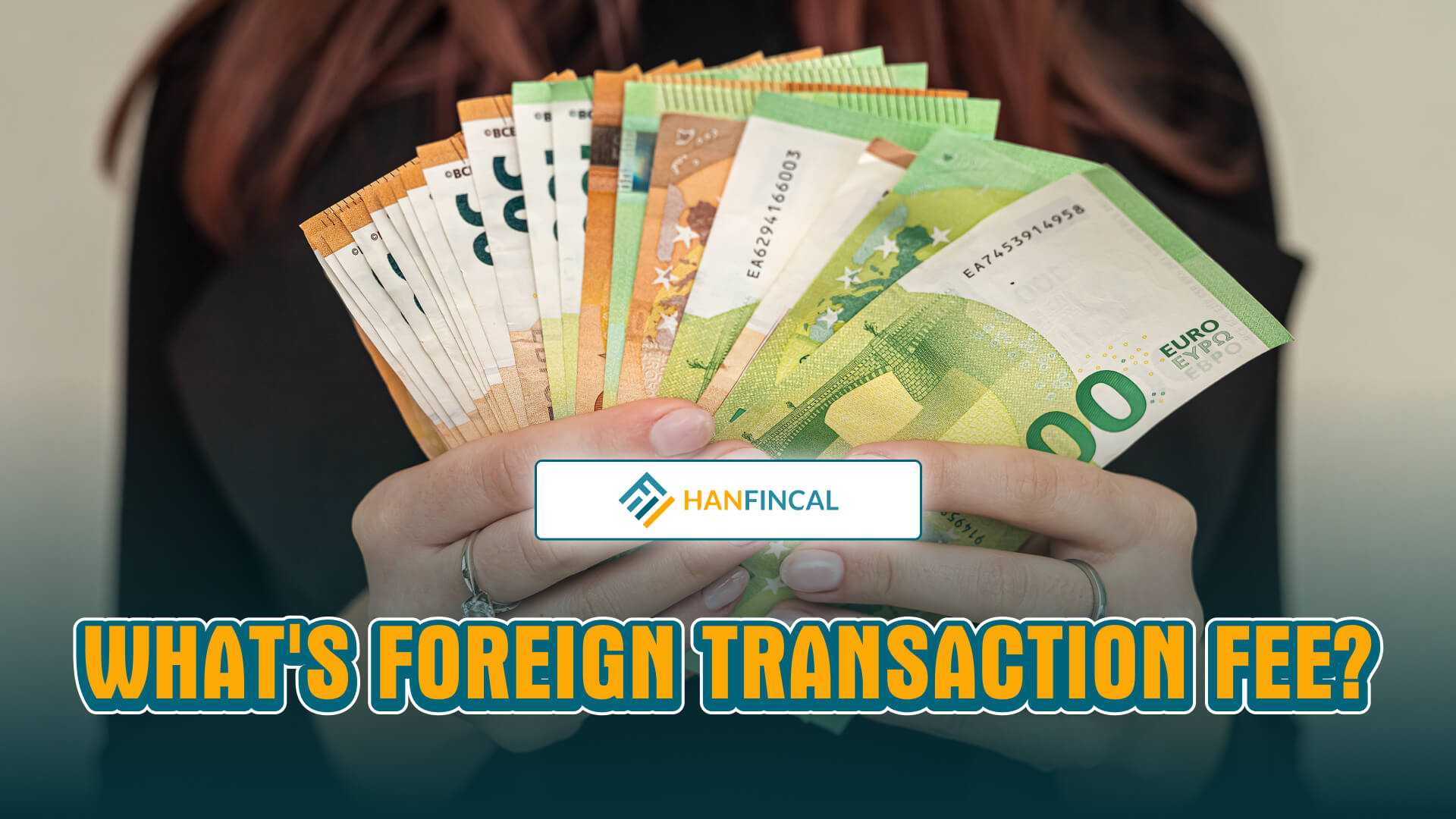When you go abroad and make purchases there or simply shop online in a foreign currency, you will be charged fees for these actions. This article will clearly explain this question: What is a foreign transaction fee? Read and take some notes with Hanfincal.
1. What is a foreign transaction fee?
A foreign transaction fee is a fee charged by a credit card issuer or bank for every purchase made outside of the U.S or shop online in a foreign currency. This fee is usually between 1% and 5%.
The foreign transaction fee is divided into two parts:
- Network fee (currency conversion fee): The credit card network charges this fee as part of the foreign transaction fee.
- Bank fee issuance: Depending on the credit card you use, some issuers charge an additional fee on top of the network fee.
2. How does a foreign transaction fee work?
A foreign transaction fee may occur when:
- You use the card to purchase or obtain a cash advance outside of the United States.
- You use the card to make foreign currency purchases of goods or services.
Foreign transaction fees are charged on the transaction after converting into U.S. dollars, typically around 3% of each transaction. This fee could be a 1% fee charged by the payment processor and a 2% fee charged by the card issuer.
While 3% may not seem like much, these fees can quickly add up throughout a long trip. You may be charged a markup on the currency conversion rate and card-based foreign transaction fees.

How does a foreign transaction fee work?
3. How to calculate foreign transaction fees?
Here are examples to calculate foreign transaction fees when using Mastercard:
If you’re going on vacation in Canada, use a Mastercard card with a 2% issuing bank fee to pay for your hotel, suppose CAD200 per night. This converts to $153 in USD after currency conversion.
Mastercard will charge 1% on top of the cost of your room based on the converted amount. The issuer will then charge an additional 2% on top of that.
Therefore, the actual cost of your hotel is ($153 * (1% + 2%)) + $153 = $157.6. This may not seem like a huge amount, but an extra 3% on top of your vacation costs can quickly add up.
It does not end there; bear in mind that exchange rates play a role in most foreign transactions. Being charged CAD10 for lunch does not imply that you will be charged $10 on your credit card. The fee will be converted to US dollars at the current exchange rate.
Another question most of you are concerned about: How much is a foreign transaction fee? Foreign transaction fees generally range from 1% to 4% of each transaction, with an average of around 3%. Paying around $3 per $100 spent may not seem like much, but these fees can add up if you make many purchases with your credit card on a foreign vacation.
4. Are foreign transaction fees charged on all credit cards?
No, not all credit cards have foreign transaction fees. Credit card companies frequently offer some cards with fees and others without. Using a credit card that does not charge these fees is best to avoid them. When a credit card has a foreign transaction fee, it is stated in the credit card agreement under “Pricing and Terms” or “Rates and Fees.”
5. How to avoid foreign transaction fees?
Here are some valuable tips to avoid paying foreign transaction fees:
- Get a credit card with no annual fees: If you despise paying foreign transaction fees, you should look for a credit card that doesn’t charge you for making international purchases.
- Exchange currency before traveling: Another option for avoiding international exchange fees is to change currencies before departing the United States.
- Pay in cash: Estimate how much cash you’ll need before your trip. Convert your money at home and bring it with you.
- Avoid using foreign ATMs: If you absolutely must withdraw money from a foreign ATM, withdraw all the cash which you will need in a short time to avoid making multiple costly trips to ATMs.
- Avoid using Dynamic Currency Conversion (DCC): DCC usually results in an unfavorable exchange rate. When a merchant accepts your DCC payment, they will be able to set their own currency exchange rate, which often results in higher rates to increase their profits.

How to avoid foreign transaction fees?
6. What is the difference between a foreign transaction fee and a currency conversion fee?
A currency conversion fee can be incurred when a credit card or debit card payment network or ATM network converts one currency, such as the US dollar, to another currency, such as the euro. The currency conversion fee is frequently combined with the foreign transaction fee. If your card charges a currency conversion fee, it could be around 1% of the purchase price.
What is a foreign transaction fee? Hanfincal provides valuable information about that topic to help you understand what it is and how to avoid paying it. Foreign transaction fees can be inconvenient, but you can minimize or eliminate those pesky fees if you’re strategic and plan ahead of time.




